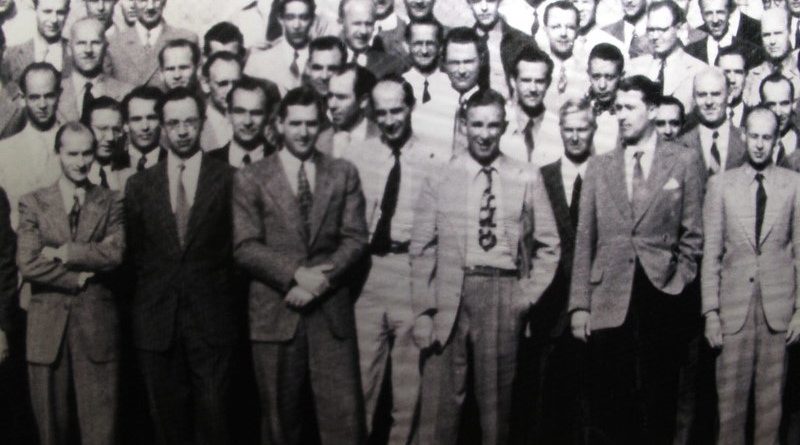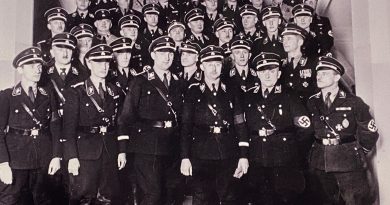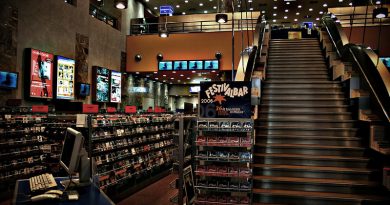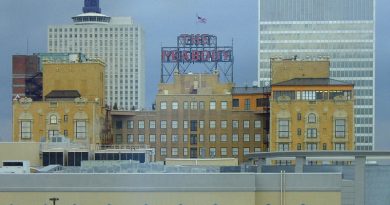Operation Paperclip: How WW 2 German scientists changed the world
Known as Operation Paperclip this was a secret US program carried out by special agents in which more than 1,600 German scientists, engineers, and technicians, such as Wernher von Braun and his V-2 rocket team, were taken from Germany to the United States, for U.S. government employment, primarily between 1945 and 1959. Many were former members, and some were former leaders, of the Nazi Party.
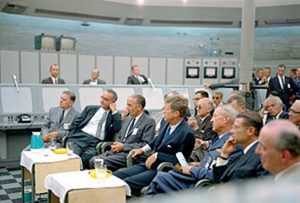
Kurt H. Debus, a former V-2 rocket scientist who became a NASA director, sitting between U.S. President John F. Kennedy and U.S. Vice President Lyndon B. Johnson during a briefing at Blockhouse 34, Cape Canaveral Missile Test Site.
The primary purpose for Operation Paperclip was U.S. military advantage in the Soviet–American Cold War, and the Space Race.
The Soviet Union then forcibly relocated more than 2,200 German specialists – a total of more than 6,000 people including family members – with Operation Osoaviakhim during one night on October 22, 1946.
Among the scientists brought to the US was Wernher von Braun chief architect of the Saturn V launch vehicle, the key instrument in getting humans to the moon.
Another, Adolf Busemann was the mind behind the swept wing, which improved aircraft performance at high speeds.
Background:
In a secret directive circulated on September 3, 1946, President Truman officially approved Operation Paperclip and expanded it to include one thousand German scientists under “temporary, limited military custody”.
May 1945, the U.S. Navy “received in custody” Herbert A. Wagner, the inventor of the Hs 293 missile; for two years, he first worked at the Special Devices Centre, at Castle Gould and at Hempstead House, Long Island, New York; in 1947, he moved to the Naval Air Station Point Mugu.
In August 1945, Colonel Holger Toftoy, head of the Rocket Branch of the Research and Development Division of the U.S. Army’s Ordnance Corps, offered initial one-year contracts to the rocket scientists; 127 of them accepted. In September 1945, the first group of seven rocket scientists (aerospace engineers) arrived at Fort Strong, located on Long Island in Boston harbour: Wernher von Braun, Erich W. Neubert, Theodor A. Poppel, August Schulze, Eberhard Rees, Wilhelm Jungert, and Walter Schwidetzky.
Beginning in late 1945, three rocket-scientist groups arrived in the United States for duty at Fort Bliss, Texas, and at White Sands Proving Grounds, New Mexico, as “War Department Special Employees”.
In 1946, the United States Bureau of Mines employed seven German synthetic fuel scientists at a Fischer-Tropsch chemical plant in Louisiana, Missouri.
On June 1, 1949, the Chief of Ordnance of the United States Army designated Redstone Arsenal in Huntsville, Alabama, as the Ordnance Rocket Centre, its facility for rocket research and development. On April 1, 1950, the Fort Bliss missile development operation—including von Braun and his team of over 130 Paperclip members—was transferred to Redstone Arsenal.
In early 1950, legal U.S. residency for some of the Project Paperclip specialists was effected through the U.S. consulate in Ciudad Juárez, Chihuahua, Mexico; thus, German scientists legally entered the United States from Latin America.
Between 1945 and 1952, the Force sponsored the largest number of Paperclip scientists, importing 260 men, of whom 36 returned to Germany and one (Walter Schreiber) remigrated to Argentina.
Eighty-six aeronautical engineers were transferred to Wright Field, Ohio, where the United States had Luftwaffe aircraft and equipment captured under Operation Lusty
The United States Army Signal Corps employed 24 specialists – including the physicists Georg Goubau, Gunter Guttwein, Georg Hass, Horst Kedesdy, and Kurt Lehovec; the physical chemists Rudolf Brill, Ernst Baars, and Eberhard Both; the geophysicist Helmut Weickmann; the optician Gerhard Schwesinger; and the engineers Eduard Gerber, Richard Guenther, and Hans Ziegler.
In 1959, 94 Operation Paperclip men went to the United States, including Friedwardt Winterberg and Friedrich Wigand.
Overall, through its operations to 1990, Operation Paperclip imported 1,600 men, as part of the intellectual reparations owed to the US and the UK, valued at $10 billion in patents and industrial processes.

